Publication: let it go, let it go
One of the first things I learned as a beginner creative writer was that it’s not just about writing the poem or the story or the book, but letting go of it. Unless, of course, you don’t really have anything to say that anyone else would want to hear-but, you don’t believe that any more than I do and I don’t even know you. All of our stories are important. All of our stories need to be told.
I believe everyone is, or can be, and should be a writer because we all have stories to tell. And I bet your story in some way connects to my story and my story connects to someone else’s story (the butterfly effect of stories). I have used a conversational exercise in writing workshops where I start a story; can be any story-for example, the cowgirl boots I might be wearing. These particular cowgirl boots, white plastic with purple and red design, were worn one night to a talent show at a cowboy bar. Those boots and I got booted off the stage, as did the dancing chicken before me! (Perhaps poetry wasn’t the talent the emcee was hoping for, but surely the audience wouldn’t have wanted to hear me sing.)
Interesting how, however, as I told my story to a group of writers, someone in the room was quick to pick up on it. Perhaps he or she owned a particular pair of boots. Perhaps they were brand name leather boots purchased out West. Or, perhaps, his or her story connected to my story because they were at cowboy bar and met the cowboy or cowgirl love of their life. Or, perhaps, she or he was at a talent contest at a more reputable venue and won that contest by, perhaps, beat boxing.
The particular exercise that started with cowboy boots ended with stories about mixed-race families. Go figure. Kind of like a poem that starts with Richard Hugo’s popular “triggering subject” that really isn’t the true subject but leads to the true subject-to a deeper understanding, or at least a quirky twist of events.
In understanding our experiences and sharing them, we often discover, though our stories are unique, that there are intersections where they meet.
But stories shared in a classroom of, perhaps, eighteen students, based on an exercise, limit our potential audience. What about the story or poem you’ve been carrying in your back pocket since, perhaps, your mother or father or grandparents passed? Have you let it go-shared it? There are internet sites where you can share that story or poem, even specific sites dedicated to grieving, to honoring those who have past; there are workshops; there are readings.
Or, perhaps that one story or poem you are carrying so close to your heart, is just the “triggering subject” for a collection of poems. When my mother passed from a leukemia blast, the black and blue bruises that got larger and darker the closer she was to death, haunted me. Black and blue bruises became the triggering subject for daily timed writings and eventually ended in a 28 verse poem, “Mother’s and Mine, which became the central poem for my book of verse, Chinese Blackbird.
Chinese Blackbird was in limbo for several years until a friend chided me into stop dawdling and let it go. But we know, fashionable publishers don’t just come knocking on our door (yes, one or two of you I’ve heard say they came knocking on yours- there are exceptions) and we could wait until we’re in our own grave before someone notices our creative work, or not, so how do we get published? It may be cliché, but I believe, as with many aspects of visibility, it’s about who we know. Here’s the conundrum: in order to know people, we have to let ourselves be known (have to know ourselves), even though we may be vulnerable and afraid. However, letting ourselves be known we, unless we’re narcissistic, have the opportunity to know diverse communities of people, one or two who may show us a path to publication. The Twin Cities of Minnesota is a hubbub of literary talents and events-classes and readings-where writers gather. If you don’t like one writer, group, or event- find another. Attend readings; support your local writers as well as national writers-the one may very well become the other. Sign up for an open-mic.
Chinese Blackbird was first published by Asian American Renaissance (AAR), a now defunct, but memorable non-profit. It was the first and last book to be published by the group that published a yearly journal, but decided to, instead, publish a book-a-year by a local Asian American author.
I worked part-time at AAR. When I quit, I remained with the non-profit as a volunteer. I edited many of the AAR journals. I got to know, oh so many, wonderful creative Asian American artists such as Marlina Gonzalez, Elsa Batica, David Mura, Bao Phi, Charissa Uemura, Rose Chu, Sandy Agustin, Sun Yung Shin, Vidhya Shanker, and Hei Kyong Kim. Because I got to know so many artists and writers and movers and shakers at AAR, and they also got to know me, Chinese Blackbird was published in 2002. Did I mention it was the first and last book to be published by AAR? However, a second edition was published by Modern History Press in 2008. Did Modern History Press come calling? No.
A friend and writer, Anya Achtenberg (http://anyaachtenberg.com/), who I had met and gotten to know in the early 80s, moved from here to there pursuing her writing, landed back in Minnesota during the New Millennium. We reconnected, even lived across the hall from each other for two years in an apartment building where we readily shared meals, chocolate, ginger candies, books, and writing ideas (and stories of relationships gone awry). One day Anya asked my opinion about whether she should accept an opportunity to have her book, Devil Girl, be published by a small independent press. We decided yes. Since the publication of Devil Girl, the publisher has also published Anya’s latest novel, Blue Earth. Anya, early on, mentioned to her publisher, Victor Volkman, Loving Healing Press, who had yet to publish poetry, that her friend, that would be me, had a manuscript of poems lying idle. The press, which focused mainly on Trauma Incident Reduction (TIR) texts, as well as self-help books had never published literature, but created a new division, Modern History Press, to accommodate the two Minnesota authors searching for home. Modern History Press has since published How to Write a Suicide Note: serial essays that saved a woman’s life, and Love Imagined: a mixed race memoir (Minnesota Book Award Finalist 2015), and has challenged me to write this book about writing.
I graduated from a MFA in Creative Writing Program, 1996, without a thought of having my stories published, without a thought, actually, of what now? Eventually, because of whom I knew in the writing community, Carolyn, amazing, Holbrook, founder of SASE: the write place, I had the opportunity to teach poetry in a neighborhood coffee shop, and because of her influence I landed a job with the Split Rocks Art Program, University of Minnesota 2001-2011. And because of another writer who I met at a poetry reading, Roseann Lloyd, I was given the opportunity to teach creative writing at Metro State University. My journey as a writer, educator, and mentor has continued to move forward as I allow myself to be vulnerable and take risks.
Writing Exercise: what is it you are obsessed about writing, but perhaps are afraid of writing, such as “black and blue bruises”? Write about your topic for ten or fifteen minutes. Take a short break, or wait a day or two. Focus on the topic again, writing for ten or fifteen minutes. Repeat this process until you’ve exhausted most, if not all possibilities. Then, re-vision and edit your numerous timed writings based on your original topic. What have you discovered? What is the poem really about? Experiment with format. A prose poem. Free verse. A poem divided into sections (for example,” Mothers and Mine”, Chinese Blackbird, 2008, Modern History Press). You, most likely, have written an insightful poem; but, you also might have discovered the theme for the book you’ve been procrastinating writing, the one that needs a home in the world.
©Sherry Quan Lee, January 9, 2016



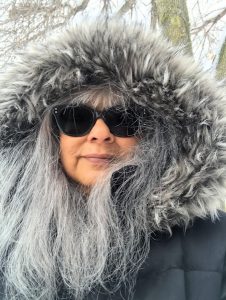

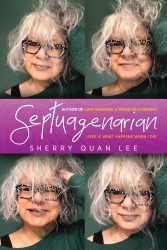
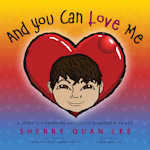
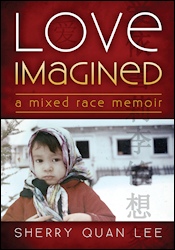
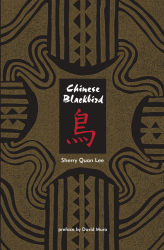
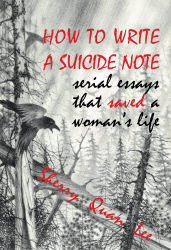

Love & appreciate your wise and thoughtful post. If we are driven to write, sincere about our stories and publishing, our ultimate goal is to share. I love that you touch on the need to test the waters, hone our craft, take chances and allow our stories to breathe, grow and find their way in classes, writer’s groups, mentor ships, critiques, etc., – the stuff of sharing. Thank you for encouraging me on that path over the years. It certainly opened new worlds for me. Thank you for sharing not only your stories but your passion and expertise.
Sherry, such a great post. “The butterfly effect” of stories and writing. . . yes. The idea of black and blue bruises somehow made a memoir piece appear in my mind instantly, so, thank you. And in small-world news, there’s a little tin of ginger candies next to me at this very moment. xo